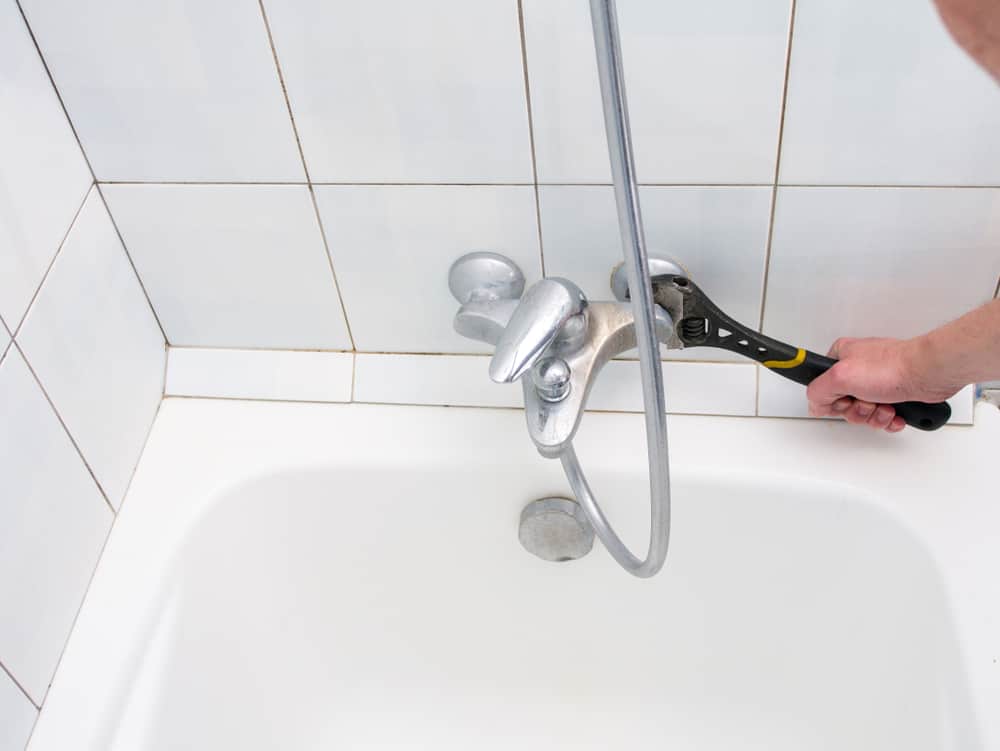5 Acrylic Bathroom Issues as well as Solutions
5 Acrylic Bathroom Issues as well as Solutions
Blog Article
{Set Up An Appointment Are you looking for facts and techniques about Things To Look Out for Before Hiring a Plumbing Company? We recommend that you clean your acrylic bathing product made of Delta ProCrylic or Acrylic with Innovex Technology with non-abrasive soaps and cleaners, such as: When it’s time to clean, always use a terry cloth towel, soft cloth or sponge to avoid scratching the acrylic surface. Don’t use abrasive scrubbing pads, steel wool or sponges, cause permanent damage to the acrylic material. If you use a drain cleaner or clog remover, be sure to rinse thoroughly with water so no product is left standing near the drain. Some chemicals and cleaners may deteriorate acrylic surfaces, causing cracks and, potentially, property damage. To avoid this, don’t use cleaning products that state on their label that they are not suitable for use on Acrylic, ABS, Polystyrene or Plastic. Be sure to check the label of any product before you apply it to the surface; it’s easier to avoid damage than to try to remedy it. Chemicals we do not recommend using to clean acrylic showers/tubs: When you’re ready to apply sealant, a little planning goes a long way. Pick up some painter’s tape and use it to mask off the seam to help make cleaning up easier. When you’re applying the bead, use a constant, steady speed to avoid an uneven finish. Use a caulk tool or a plastic spoon to work the sealant into the joint. Wetting the tool with denatured alcohol will help create a smooth finish. Follow the directions on the back of the tube for cure time. Certain chemicals and cleaners may deteriorate acrylic surfaces, causing cracks and, potentially, property damage. After you’re finished applying it, clean up the product surface and remove any excess sealant with denatured alcohol. Don’t use solvents (turpentine, lacquer thinner, mineral spirits, paint thinner, MEK, xylene, acetone, naphtha, etc.) that can wreak havoc on an acrylic surface. With a little care and consideration, you can prevent damage to your acrylic shower or tub. Keep a supply of soft cloths handy and remove any damaging products or abrasive scrubbing items from the bathroom to ensure they aren’t around when it’s time to clean. https://www.deltafaucet.com/design-innovation/inspiredliving/how-to-clean-acrylic-shower As a devoted person who reads on Finding the Right Plumbing Expert, I think sharing that excerpt was worth the trouble. So long as you appreciated our page if you please remember to pass it around. Thanks a lot for going through it.
Acrylic bathrooms, shower trays, as well as various other acrylic restroom ware have actually ended up being more typical in bathrooms in recent times. Not as durable as well as classy as enamel and porcelain baths and also fixtures, they are extra economical and also serve pretty a lot the very same basic function. Some usual examples of damages to acrylic washroom fixtures include staining, cracks, openings, and so on.Bathroom Discoloration
With extended use of acrylic bathrooms comes staining or staining. While some spots can be gotten rid of conveniently, making use of unique chemicals, others call for that the bathroom be resprayed. Aromatherapy oils loosen up the dust in some situations consequently restoring the bathroom to its previous magnificence.Chain reaction
Often, people try to repaint the whole surface of their acrylic bathroom by themselves either since they do not like the shade to conceal acnes. You should never ever utilize paint remover on acrylic bathrooms. Paint removers do not respond with the surface of metal bathrooms, they destroy acrylic bathrooms irreversibly.Scratched shower or bathroom surface area
Acrylic bathroom components are not abrasion-resistant like enamel varieties. They are a lot more prone to scratches and also less sturdy. Being a really soft material, acrylic scrapes can even be hidden without coating or dental filling. For these, you should seek specialist help for your bathroom repairs. As a prevention pointer, avoid using rough sponges when cleansing. Instead, you must make use of an easy fluid cleanser with a soft pad.Split Polymer Baths
The life expectancy of acrylic and fiberglass baths is up to 15-20 years for shower frying pans and also bathrooms, typically. Cracks in an acrylic shower tray are probably among the most convenient problems to fix for a fixing specialist. This is the same for PVC, resin, as well as various other such products.
Acrylic baths, shower trays, and various other acrylic bathroom ware have actually come to be much more common in bathrooms in current times. With extended use of acrylic bathrooms comes discoloration or discoloration. You ought to never make use of paint cleaner on acrylic baths. Paint eliminators do not respond with the surface of steel baths, they damage acrylic baths irreversibly. The lifespan of acrylic as well as fiberglass bathrooms is up to 15-20 years for shower frying pans and bathrooms, usually.How to clean Acrylic shower
USE THESE NON-ABRASIVE CLEANERS
DO NOT USE THESE CLEANERS
Sealant Application Tips

Get Estimate